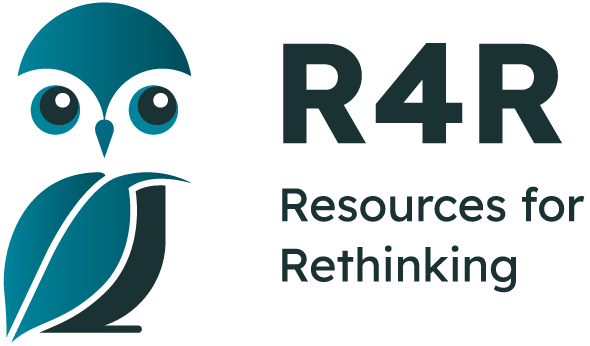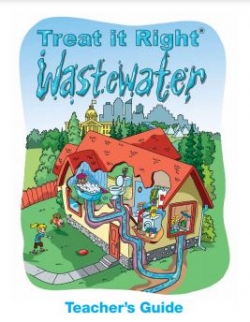- Home
- Tutorial
- Resource Guides
- Focus Areas
- LSF Programs
-
Professional
Development - Review Process
-
A project of LSF

Search for Resources
Description
In Treat It Right! Wastewater students are challenged to think about how to change their actions and those of their families to protect the environment by learning about what to flush and dump down the drain. Students learn how water is managed and treated in the City of Edmonton. The concepts are explored through a series of lessons which inform the students how to take personal action by identifying ways that they and their families can take to minimize their negative impact on wastewater.
Students will:
- calculate the amount of wastewater each resident produces each day
- create a board game using what they have learned about the proper treatment of wastewater.
- complete a waterwaste survey about what happens in their homes and create an improvement plan
- calculate how far the wastewater travels from school to the water treatment plant.
- learn about choices they can make for the good of the environment
- create their own water waste word search
- make up some natural cleaners to take home or to use in the classroom using the recipes provided
The resource contains a teacher’s guide complete with duplicating masters and an evaluation.
General Assessment
What skills does this resource explicitly teach?
- Identifying biodegradable and non-biodegradable materials to keep drainage systems safe.
- Recipes for natural cleaners to be used at home and at school.
Strengths
- Each lesson plan provides the objectives, materials as well as informative teacher background information.
- Although the resource pertains to the city of Edmonton, it can easily be adapted to any city.
- The readings are age-appropriate and very informative.
- Contact information provided to clarify any questions or concerns.
- The package is up-to-date and easy to use.
- The activities are age-appropriate and can be adapted to other grade levels.
Weaknesses
- No assessment rubrics or self-assessment opportunities for students.
- No adaptations for students with special needs or physical disabilities.
- No outdoor experiences
Relevant Curriculum Units
The following tool will allow you to explore the relevant curriculum matches for this resource. To start, select a province listed below.
- Step 1Select a province
- Alberta
- Step 2Select a grade level
- Grade 2
- Step 3Select a subject
- Science
- Step 4Relevant matches
- Living Systems: Understandings of the living world, Earth, and space are deepened by investigating natural systems and their interactions
- Grade 3
- Step 3Select a subject
- English/Language Arts
- Step 4Relevant matches
- Comprehension: Text comprehension is supported through applying varied strategies and processes, and considering both particular contexts and universal themes
- Grade 5
- Step 3Select a subject
- English/Language Arts
- Step 4Relevant matches
- Writing: Ideas and information can be articulated accurately and imaginatively through the use of writing processes and an understanding of the author’s craft
- British Columbia
- Step 2Select a grade level
- Grade 2
- Step 3Select a subject
- Science
- Step 4Relevant matches
- Science 2: Water is essential to all living things and it cycles through the environment
- Grade 4
- Step 3Select a subject
- Science
- Step 4Relevant matches
- Science 4: All living things sense and respond to their environment
- Manitoba
- Step 2Select a grade level
- Grade 2
- Step 3Select a subject
- Science
- Step 4Relevant matches
- Air and Water in the Environment
- Earth Science
- Grade 3
- Step 3Select a subject
- English/Language Arts
- Step 4Relevant matches
- Language as Exploration and Design
- Language as Sense Making
- Grade 4
- Step 3Select a subject
- English/Language Arts
- Step 4Relevant matches
- Language as Exploration and Design
- Language as Sense Making
- Science
- Step 4Relevant matches
- Habitat and Communities
- Grade 5
- Step 3Select a subject
- English/Language Arts
- Step 4Relevant matches
- Language as Exploration and Design
- Language as Sense Making
- New Brunswick
- Step 2Select a grade level
- Grade 2
- Step 3Select a subject
- English/Language Arts
- Step 4Relevant matches
- Reading
- Representation
- Grade 3
- Step 3Select a subject
- English/Language Arts
- Step 4Relevant matches
- Reading
- Representations
- Grade 4
- Step 3Select a subject
- English/Language Arts
- Step 4Relevant matches
- Reading
- Representations
- Grade 5
- Step 3Select a subject
- English/Language Arts
- Step 4Relevant matches
- Reading
- Representations
- Newfoundland & Labrador
- Step 2Select a grade level
- Grade 2
- Step 3Select a subject
- English/Language Arts
- Step 4Relevant matches
- Reading & Viewing
- Writing & Representing
- Grade 3
- Step 3Select a subject
- English/Language Arts
- Step 4Relevant matches
- Reading & Viewing
- Writing & Other Ways of Representing
- Grade 4
- Step 3Select a subject
- English/Language Arts
- Step 4Relevant matches
- Reading & Viewing
- Writing & Other Ways of Representing
- Science
- Step 4Relevant matches
- Habitats
- Grade 5
- Step 3Select a subject
- English/Language Arts
- Step 4Relevant matches
- Reading & Viewing
- Writing & Other Ways of Representing
- Northwest Territories
- Step 2Select a grade level
- Grade 2
- Step 3Select a subject
- English/Language Arts
- Step 4Relevant matches
- Plan, Focus, Interpret & Analyse
- Science
- Step 4Relevant matches
- Earth and Space Systems: Air and Water in the Environment
- Science 2: Water is essential to all living things and it cycles through the environment
- Grade 3
- Step 3Select a subject
- English/Language Arts
- Step 4Relevant matches
- Comprehend and Respond
- Interpret & Analyse
- Grade 4
- Step 3Select a subject
- Science
- Step 4Relevant matches
- Science 4: All living things sense and respond to their environment
- Nova Scotia
- Step 2Select a grade level
- Grade 2
- Step 3Select a subject
- English/Language Arts
- Step 4Relevant matches
- Composition
- Comprehension
- Science
- Step 4Relevant matches
- Science 2: Air and Water in the Environment
- Science 2:Liquids, Solids and Mixtures
- Grade 3
- Step 3Select a subject
- English/Language Arts
- Step 4Relevant matches
- Reading and Viewing
- Writing and Representing
- Grade 4
- Step 3Select a subject
- English/Language Arts
- Step 4Relevant matches
- Reading & Writing
- Writing & Representing
- Grade 5
- Step 3Select a subject
- English/Language Arts
- Step 4Relevant matches
- Reading & Writng
- Writing and Representing
- Nunavut
- Step 2Select a grade level
- Grade 2
- Step 3Select a subject
- English/Language Arts
- Step 4Relevant matches
- Access and Explore
- Plan, Focus, Interpret & Analyse
- Grade 3
- Step 3Select a subject
- English/Language Arts
- Step 4Relevant matches
- Access and Explore
- Comprehend and Respond
- Interpret & Analyse
- Social Studies
- Step 4Relevant matches
- Connecting With the World: Economics & Resources
- Grade 4
- Step 3Select a subject
- English/Language Arts
- Step 4Relevant matches
- Comprehend & Respond
- Interpret and Analyse
- Social Studies
- Step 4Relevant matches
- Provinces and Territories: Our Places, Stories, and Traditions: The Land: Place & People
- Grade 5
- Step 3Select a subject
- English/Language Arts
- Step 4Relevant matches
- Comprehend and Respond
- Plan, Focus, Interpret & Analyse
- Ontario
- Step 2Select a grade level
- Grade 2
- Step 3Select a subject
- English/Language Arts
- Step 4Relevant matches
- Language: Composition: Expressing Ideas and Creating Texts
- Language: Comprehension: Understanding and Responding to Texts
- Science & Technology
- Step 4Relevant matches
- Earth and Space Systems: Air & Water in the Environment
- Grade 3
- Step 3Select a subject
- English/Language Arts
- Step 4Relevant matches
- Language: Composition: Expressing Ideas and Creating Texts
- Language: Comprehension: Understanding and Responding to Texts
- Grade 4
- Step 3Select a subject
- English/Language Arts
- Step 4Relevant matches
- Language: Comprehension: Understanding and Responding to Texts
- Science & Technology
- Step 4Relevant matches
- Life Systems: Habitats and Communities
- Grade 5
- Step 3Select a subject
- English/Language Arts
- Step 4Relevant matches
- Language: Composition: Expressing Ideas and Creating Texts
- Language: Comprehension: Understanding and Responding to Texts
- Prince Edward Island
- Step 2Select a grade level
- Grade 2
- Step 3Select a subject
- English/Language Arts
- Step 4Relevant matches
- Reading and Viewing
- Writing and Other Ways of Representing
- Science
- Step 4Relevant matches
- Air & Water in the Environment
- Grade 3
- Step 3Select a subject
- English/Language Arts
- Step 4Relevant matches
- Reading and Viewing
- Writing and Other Ways of Representing
- Grade 4
- Step 3Select a subject
- English/Language Arts
- Step 4Relevant matches
- Reading and Viewing
- Writing and Other Ways of Representing
- Science
- Step 4Relevant matches
- Habitats
- Grade 5
- Step 3Select a subject
- English/Language Arts
- Step 4Relevant matches
- Reading and Viewing
- Writing and Other Ways of Representing
- Quebec
- Step 2Select a grade level
- Grade 2
- Step 3Select a subject
- English/Language Arts
- Step 4Relevant matches
- To read and Listen to Literary, Popular and Information -based texts
- Grade 3
- Step 3Select a subject
- English/Language Arts
- Step 4Relevant matches
- To read and Listen to Literary, Popular and Information -based texts
- To write self - expressive narrative and information -
- Science & Technology
- Step 4Relevant matches
- Living Things
- Grade 4
- Step 3Select a subject
- English/Language Arts
- Step 4Relevant matches
- To read and Listen to Literary, Popular and Information -based texts
- To write self - expressive narrative and information -
- Science & Technology
- Step 4Relevant matches
- Living Things
- Grade 5
- Step 3Select a subject
- English/Language Arts
- Step 4Relevant matches
- To read and Listen to Literary, Popular and Information -based texts
- To write self - expressive narrative and information -
- Science & Technology
- Step 4Relevant matches
- Living Things
- Saskatchewan
- Step 2Select a grade level
- Grade 2
- Step 3Select a subject
- English/Language Arts
- Step 4Relevant matches
- Assess and Reflect
- Compose and Create
- Comprehend and Respond
- Science
- Step 4Relevant matches
- Air and Water in the Environment
- Grade 3
- Step 3Select a subject
- English/Language Arts
- Step 4Relevant matches
- Compose and Create
- Grade 4
- Step 3Select a subject
- English/Language Arts
- Step 4Relevant matches
- Compose and Create
- Comprehend and Respond
- Science
- Step 4Relevant matches
- Habitats and Communities
- Grade 5
- Step 3Select a subject
- English/Language Arts
- Step 4Relevant matches
- Compose and Create
- Comprehend and Respond
- Yukon Territory
- Step 2Select a grade level
- Grade 2
- Step 3Select a subject
- Science
- Step 4Relevant matches
- Science 2: Water is essential to all living things and it cycles through the environment
- Grade 4
- Step 3Select a subject
- Science
- Step 4Relevant matches
- Science 4: All living things sense and respond to their environment
Themes Addressed
Water (2)
- Water Treatment and Distribution
- Water Use
Sustainability Education Principles
| Principle | Rating | Explanation |
|---|---|---|
| Consideration of Alternative Perspectives | Good |
|
Consideration of Alternative Perspectives:
| ||
| Multiple Dimensions of Problems & Solutions | Good |
|
| Multiple Dimensions of Problems & Solutions: Effectively addresses the environmental, economic and social dimensions of the issue(s) being explored.
| ||
| Respects Complexity | Good |
|
| Respects Complexity: The complexity of the problems/issues being discussed is respected. | ||
| Acting on Learning | Good |
|
| Acting on Learning: Learning moves from understanding issues to working towards positive change — in personal lifestyle, in school, in the community, or for the planet
| ||
| Values Education | Poor/Not considered |
|
| Values Education: Students are explicitly provided with opportunities to identify, clarify and express their own beliefs/values. | ||
| Empathy & Respect for Humans | Poor/Not considered |
|
| Empathy & Respect for Humans: Empathy and respect are fostered for diverse groups of humans (including different genders, ethnic groups, sexual preferences, etc.). | ||
| Personal Affinity with Earth | Poor/Not considered |
|
| Personal Affinity with Earth: Encourages a personal affinity with -the natural world.
| ||
| Locally-Focused Learning | Very Good | |
| Locally-Focused Learning: Includes learning experiences that take advantage of issues/elements within the local community.
| ||
| Past, Present & Future | Good | |
| Past, Present & Future: Promotes an understanding of the past, a sense of the present, and a positive vision for the future. | ||
Pedagogical Approaches
| Principle | Rating | Explanation |
|---|---|---|
| Open-Ended Instruction | Good | The lesson plans include:
|
| Open-Ended Instruction
: Lessons are structured so that multiple/complex answers are possible; students are not steered toward one 'right' answer. | ||
| Integrated Learning | Satisfactory |
|
| Integrated Learning: Learning brings together content and skills from more than one subject area
| ||
| Inquiry Learning | Good | Students get to discover and build knowledge through:
|
| Inquiry Learning: Learning is directed by questions, problems, or challenges that students work to address.
| ||
| Differentiated Instruction | Poor/Not considered |
|
| Differentiated Instruction: Activities address a range of student learning styles, abilities and readiness.
| ||
| Experiential Learning | Good | |
| Experiential Learning: Authentic learning experiences are provided
| ||
| Cooperative Learning | Satisfactory |
|
| Cooperative Learning: Group and cooperative learning strategies are a priority.
| ||
| Assessment & Evaluation | Satisfactory |
|
| Assessment & Evaluation: Tools are provided that help students and teachers to capture formative and summative information about students' learning and performance. These tools may include reflection questions, checklists, rubrics, etc. | ||
| Peer Teaching | Good |
|
| Peer Teaching: Provides opportunities for students to actively present their knowledge and skills to peers and/or act as teachers and mentors.
| ||
| Case Studies | Good |
|
| Case Studies: Relevant case studies are included. Case studies are thorough descriptions of real events from real situations that students use to explore concepts in an authentic context. | ||
| Locus of Control | Satisfactory |
|
| Locus of Control: Meaningful opportunities are provided for students to choose elements of program content, the medium in which they wish to work, and/or to go deeper into a chosen issue. | ||

